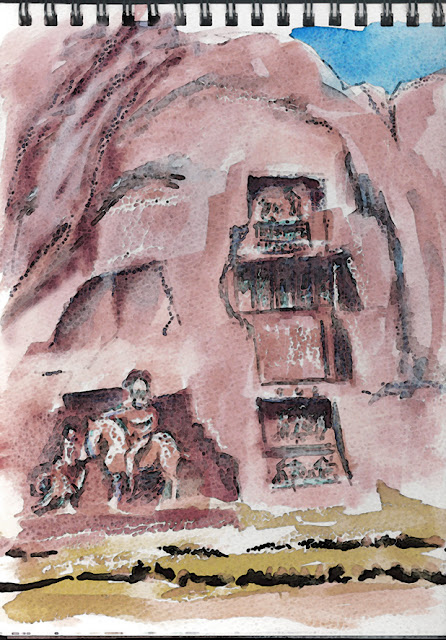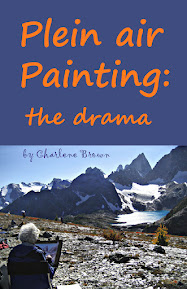Watercolour and crayon
©2017 Charlene Brown
If an artist could
choose a location for a studio anywhere in the world, I think Vancouver Island and
the Gulf Islands would be contenders – especially a spot that included a view of the
ocean and some mountains.
The perfect place
shown here is on the south coast of Vancouver Island, near Sooke, looking out across
the Strait of Juan de Fuca to the Olympic peninsula of Washington state. This particular
location is already taken (by artisans who somehow find the time to look after llamas
and a spectacular garden as well as potting and woodworking) but there are still a few perfect places
available...
















